#nemanjić
Text
so after the migration of the slavs to the balkans, a number of different tribal confederations established themselves in settlements previously inhabited by latinised illyrians and the like. through conquest, intermarriage and general incompetence, basically only two such chiefdoms managed to survive the early mediaeval period, those being croatia and serbia (bosnia is a complicated case). but. for a significant period of time, a number of smaller slavic polities existed in what is today southern croatia and montenegro—

those being pagania/narantania (marked in pink on the map; includes the islands of hvar and brač); zachumlia; travunia; and dioclea. the last of these in particular was systematically serbianised by the nemanjić family, the distant, distant memory of a sovereign dioclea eventually becoming quite important to montenegrin ethnic nationalism in the first half of the 20th century.
now. my point is. can u imagine the shrimp colours of racism we could've had if these chiefdoms remained independent. can you imagine if we could force poor westerners to distinguish croats from zachumlians, zachumlians from travunians, and travunians from serbs. we could've had it all. our wars could've led to a nuclear winter
32 notes
·
View notes
Text
Human!AU names
Eleven/Eileil : Elliot
Second/Riikii: Riki
Slashr: has Slasher as a nickname, and as what they go by, but their legal name is Camille ( @littleguys-ooc if you remember avyril suggested something similar for Slashr's name on the blog!)
TA/Emhoji: Emma but spelled weirdly like Emmha or something
Balkantroll/Rastko Nemanj : Rastko Nemanjić . Its just the full name of the guy her name was based off of.
Ruubin Kammen: Rubi (Ruby)
YFIC/Kullie: Kallie or Kylie
Twelve/Liexii: trying to find old names that don't sound goofy is so hard, the closest i got was like, Lewis, and that's still not really the vibe I'm going for. so i gave up and went searching for Ocean themes ones instead. Still not satisfied with anything i found but the closet i could get to something decent was Caspian or Adrian. SUGGESTIONS PLS
#you'd be suprised how little male names there are that start with L#talk#AU#human!au#the gangs all here#eileil naraal#riikii taavii#slashr faiyze#emhoji simmbl#rastko nemanj#liexii naraal#Ruubin kammen#Kullie Awoble
4 notes
·
View notes
Text


Statue of Stefan Nemanja (1113-1199), founder of Nemanjić dynasty which ruled medieval Serbia.
22 notes
·
View notes
Text
Here's a timeline of Serbian history with key details:
- 7th century: The Slavs settle in the Balkan Peninsula, laying the foundation for the Serbian people's emergence.
- 9th century: The Serbian state begins to form under the leadership of Vlastimir, marking the early stages of Serbian statehood.
- 10th century: The medieval Serbian state is established, with the Nemanjić dynasty becoming prominent rulers.
- 1166: Stefan Nemanja founds the Serbian Orthodox Church and becomes the Grand Župan (prince) of Serbia.
- 1346: The Serbian Empire, led by Stefan Dušan, reaches its zenith, encompassing much of the Balkans.
The Serbian Empire in 1346, also known as the Empire of Stefan Dušan, was a medieval Serbian state that reached its zenith under the rule of Stefan Dušan, a remarkable Serbian monarch. Here are some key details about the Serbian Empire at that time:
**1. Stefan Dušan's Ascension:** Stefan Dušan, also known as Dušan the Mighty, became the ruler of Serbia in 1331 as the King of Serbia, succeeding his father, Stefan Dečanski. He expanded his authority over various regions, including parts of modern-day Serbia, Montenegro, Macedonia, and Greece.
**2. Coronation as Emperor:** In 1346, Stefan Dušan elevated his status to that of Emperor, adopting the title "Emperor of Serbs and Greeks." This move signified his ambition to establish a multi-ethnic and multi-religious empire.
**3. Territorial Expansion:** Under Dušan's rule, the Serbian Empire expanded significantly. It reached its territorial peak, encompassing a vast area of southeastern Europe. His conquests included regions inhabited by Serbs, Greeks, Albanians, and Bulgarians.
**4. Legal and Administrative Reforms:** Dušan implemented a legal code known as the "Dušan's Code" or "Dušan's Law," which was a comprehensive set of laws and regulations. It aimed to create a unified legal framework for his diverse subjects and to consolidate his rule.
**5. Religious Policy:** Despite the empire's religious diversity, Dušan supported the Serbian Orthodox Church and worked to strengthen its influence. He saw himself as the protector of Orthodoxy and sought to establish the Serbian Patriarchate under his rule.
**6. Cultural Flourishing:** The Serbian Empire under Stefan Dušan saw a flourishing of culture, art, and architecture. Notably, he commissioned the construction of the Monastery of the Holy Archangels in Prizren, which remains a significant cultural and historical site.
**7. Decline and Succession:** Despite its initial success, the Serbian Empire faced internal and external challenges. Stefan Dušan died in 1355, and his empire began to weaken due to internal conflicts and external pressures from the Ottoman Turks and other neighboring powers.
**8. Fragmentation:** After Dušan's death, the empire fragmented into smaller states and principalities, including the Serbian Despotate, which continued to exist for several decades. The Ottoman Turks gradually expanded their influence in the region, eventually leading to the fall of Serbian medieval states to Ottoman rule in the late 14th and early 15th centuries.
In summary, the Serbian Empire of 1346, led by Stefan Dušan, represented a brief but significant period in Serbian history when the country reached the height of its territorial and political influence. Dušan's ambitious rule left a lasting impact on the region's history and culture, even though the empire's decline was inevitable in the face of external threats and internal divisions.
- 1389: The Battle of Kosovo takes place, with Serbian forces led by Prince Lazar facing the Ottoman Empire. Though a tactical draw, it marks the beginning of Ottoman dominance in the region.
- 15th-19th centuries: Serbia remains under Ottoman rule, enduring centuries of struggle for independence.
- 1804: The First Serbian Uprising against the Ottoman Empire begins, eventually leading to autonomy for Serbia.
- 1835: The Convention of Akkerman grants Serbia expanded autonomy under Ottoman suzerainty.
- 1878: The Congress of Berlin recognizes Serbia as an independent nation, free from Ottoman control.
- 1914: The assassination of Archduke Franz Ferdinand of Austria-Hungary in Sarajevo triggers World War I, during which Serbia faces significant hardships.
- 1918: The Kingdom of Serbs, Croats, and Slovenes (later Yugoslavia) is formed, uniting South Slavic peoples under King Alexander I.
- 1941-1945: Yugoslavia is occupied by Axis powers during World War II, leading to the formation of the Yugoslav Partisans resistance movement.
- 1945: Yugoslavia becomes a socialist federation under Marshal Tito's leadership.
- 1991: The disintegration of Yugoslavia begins with the secession of Slovenia and Croatia.
- 1999: NATO intervenes in Kosovo, a province of Serbia, leading to the end of hostilities in the Kosovo War.
- 2003: The Federal Republic of Yugoslavia transforms into the State Union of Serbia and Montenegro.
- 2006: Montenegro holds a referendum and gains independence, leaving Serbia as the successor state.
- 2008: Kosovo unilaterally declares independence from Serbia, which Serbia does not recognize.
- 2019: Aleksandar Vučić is elected as Serbia's president, continuing his leadership.
This timeline offers a snapshot of Serbia's complex history, marked by periods of independence, Ottoman rule, socialist federation, and the challenges of the breakup of Yugoslavia in the late 20th century. Serbia remains a key player in the Balkan region today.
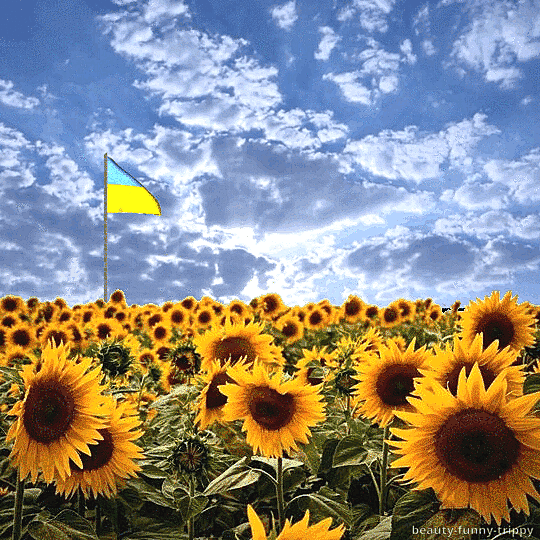
4 notes
·
View notes
Text
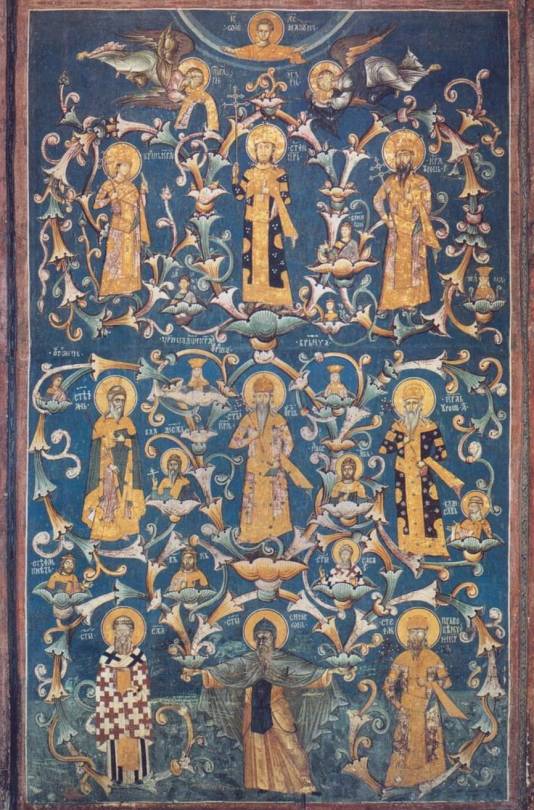
Lineage of Nemanjić dynasty, fresco from the Church of Christ Pantocrator, Dečani Monastery, Serbia. It was painted sometime after the coronation of Stephen Dušan for the Emperor of Serbs and Greeks, on 16th of April 1346 in Skopje. Sprung from the hands of its founder, Stephen Nemanja (monk Symeon), vines connect 22 members of the Serbian ruling house, ending with Emperor Dušan and his young son and heir, king Uroš. High above the lineage, Christ Emmanuel is giving his blessing, while two of his angels are handing signs of imperial dignity to Emperor Dušan - loros and a crown.
14 notes
·
View notes
Photo

Prizren Fortress (Albanian: Каlаја e Prizrenit; Serbian: Призренски град, Prizrenski grad) is a hilltop fortification in Prizren in Kosovo. It overlooks the Prizren River which flows through Prizren, which developed around the fortress. The site of the fortress of Prizren has seen habitation and use since the Bronze Age (ca. 2000). In late antiquity it was part of the defensive fortification system in western Dardania and was reconstructed in the era of eastern Roman Emperor Justinian. Byzantine rule in the region ended definitively in 1219–20 as the Serbian Nemanjić dynasty controlled the fort until 1371.
Since 1371, a series of regional feudal rulers came to control Prizren and its fort: the Balšić, the Dukagjini, the Hrebeljanović and finally the Branković, often with Ottoman support. The Ottoman Empire assumed direct control after 1450 and over time turned the fort into a central stronghold in the Eyalet of Rumelia. Much of the modern fortress dates to the 18th century reconstruction phase.
The fortress is situated on a dominant hill at the eastern part of the town of Prizren, set on a strategic position, contoured with lines that follow distinguished features of the terrain's natural morphology. Archaeological excavations were carried out in 1969 and then again in 2004 and 2009–2011. They resulted in the discovery of the infrastructure, which incorporates rampart walls enforced with towers, casemates, labyrinth corridors, depots, and other accompanying inner rooms and dwellings. It was declared a Monument of Culture of Exceptional Importance in 1948.
6 notes
·
View notes
Text
Supreme Guide to Serbian Wine

Serbia is an effective representative of winemaking in the Balkan spot, with specific terroirs and a mild along with comfortable climate, loan themselves to the prosperous cultivation of together indigenous and overseas varietals. https://apartman-beograd.in.rs/
These are place together by a very customary and often unique procedure for winemaking itself, which results in some wonderful Serbian wines you simply need to experience if you’re visiting!
A Brief History involving Serbian Wine
Bicycles of Serbian wines begins before the Serbian people inhabited that territory currently called Serbia.
As far back as this 5th century BC, Greeks brought vines and winemaking with the geographical region which can be Serbia currently, not like up to then, your peoples living at this point were drinking cocktails made of fermented grains, something like beer.
Different amphorae (clay veins used for winemaking) had been also found in the course of excavations of archeological sites around Serbia, their markings signaling that wine ended up being brought here, largely from Thassos, a island in A holiday in greece.
In the 1st 100 years AD, the Roman emperor Domitian identified a monopoly upon wine, thanks to that no Roman state other than Italy, where by he had personal vineyards, was allowed to provide wine - the forthcoming territory of Serbia being among them.
This particular legislation was ultimately removed in the final century AD by way of Marcus Aurelius Probus, born in Sirmium, a Roman community on the territory associated with today’s Serbia. They planted the first grape vine on the slopes from Mons Aureus inside Fruška Gora, which happens to be regarded as the beginning of winemaking in Serbia.
Marcus Aurelius Probus moreover started vineyards in a variety of Serbian territories as well as a varietal named Probus was engineered with Serbia in her honor in modern times. (Editor’s observe: There’s also an unusually tasty winery within Sremski Karlovci focused upon him, included on this subject wonderful day trip out of Belgrade which I do last year)
Should the Serbian people transfered to the region within the Balkan peninsula inside the 6th century POST, they didn’t deliver with them a civilization of wine, however , under the process of Christianization spearheaded by the Byzantine Empire, the Serbian people soon approved wine along with Christianity, as wine has got always played a good central role around Christianity.
In the twelfth century, when the Nemanjić dynasty came to strength in Serbia, winemaking gained much more great importance. At this time, wine is mostly being created by monasteries, which would usually receive vineyards being gift from the lording it over classes, including the Nemanjić family.
In the fourteenth century, one of the most important Serbian rulers, Tsar Dušan the Great, printed the first written legal procedure in the country in the form of Dušanov Zapisnik, and this word contained, amongst other suggestions, the first laws similar to today’s geographical coverage of wines inside Serbia. All old Serbian rulers ended up being very attentive to Serbian vineyards which placed the foundation for winemaking today.
Wine formulation was brought to an end by the Ottoman Empire’s conquering of Serbia in the 14th hundred years, since Islam forbids alcohol consumption.
Right now, the Ottoman Empire tried hard so that you can destroy Serbian vineyards, even going exactly where recruiting special militant forces whose lone purpose was a destruction of vineyards. As Serbs transferred north in an attempt to break free from the Ottoman Empire, they moved with these the wine production within the central and south regions of Serbia at which it was once a large number of prominent.
There are files suggesting Serbian governing officials would provide barrels of bermet and ausburh (two special Serbian vino varietals) with them for the Austrian court to be able to curry favor while using Austro-Hungarian Empire.
Round 1880, the Serbian vineyards were hit down by Phylloxera, a virus of which attacked many Western wine regions, even so the vineyards were rehabilitated in the following yrs.
Despite all of the struggles Serbian vineyards possess endured, they continue even today.
0 notes
Photo
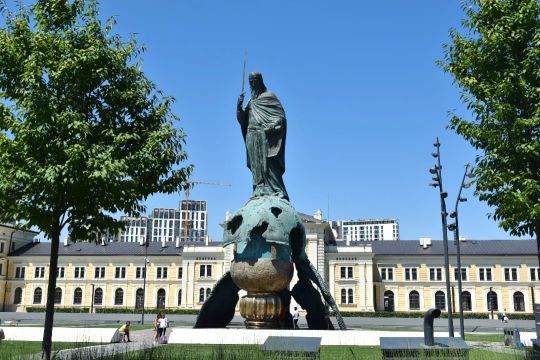
Sávské náměstí (srbsky Савски трг/Savski trg) je náměstí v metropoli Srbska v Bělehradu. V centrální části Sávského náměstí před budovou bývalého nádraží (nová budova Historického muzea Srbska) se nachází pomník velkého prefekta Stefana Nemanji, který je považován za jednoho z nejvýznamějších srbských panovníků. Srbský velký prefekt Stefan Nemanji (1166-1196 ), bojoval za politickou nezávislost na Byzanci a sjednocení srbských zemí( Raška , Duklja , Travunija , Humska zemlja , Neretva krajina ) do jediného státu. Byl předkem srbské vládnoucí dynastie Nemanjić , která zůstala u moci až do roku 1371. Srbsko má turistům co ukázat, přestože třeba hlavní město bylo během historie čtyřiačtyřicetkrát poničeno. Hlavní město Srbské republiky Bělehrad (srbsky Beograd) leží na soutoku Sávy a Dunaje. Málokteré evropské město má tak pohnutou historii. Bělehrad vám ihned ukáže, že už leží mimo konvenční svět střední Evropy. Temperamentní Balkán tu dravě a nekompromisně zaútočí na všechny smysly. #savskenamesti #savskitrg #savskitrgbeograd #beograd #belehrad #serbia #srbsko #dofeexpedice #dofeexpedition #dofeczech #dofeprosek #spsnaproseku #stefannemanja https://www.instagram.com/p/Cpr31KPLRWu/?igshid=NGJjMDIxMWI=
#savskenamesti#savskitrg#savskitrgbeograd#beograd#belehrad#serbia#srbsko#dofeexpedice#dofeexpedition#dofeczech#dofeprosek#spsnaproseku#stefannemanja
0 notes
Text
SAVA NEMANJIĆ (Sveti Sava) ISTORIJA I PREDANJE - VOJISLAV ĐURIĆ
SAVA NEMANJIĆ (Sveti Sava) ISTORIJA I PREDANJE – VOJISLAV ĐURIĆ
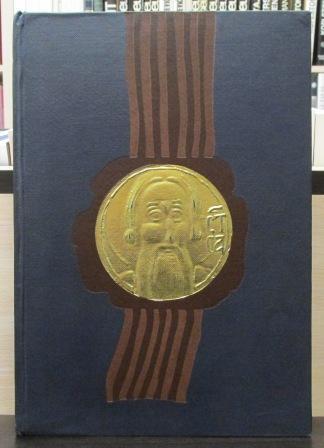
View On WordPress
0 notes
Photo
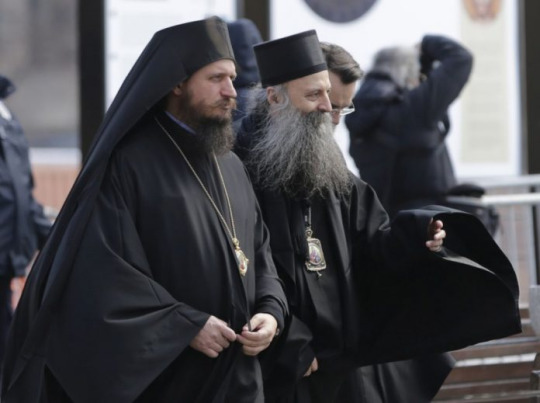
Stepinca su smjestili u pakao: Pročitajte koga je sve SPC proglasio svetim
Do sada neviđeni presedan napravila je Srpska pravoslavna crkva (SPC). Ona je blaženika Katoličke crkve smjestila u pakao. Poznato je da Crkva nikada ne daje konačnu presudu čovjeku, koju samo Bog može dati. Tako Crkva nikoga ne smješta u pakao. Srpska crkva smjestila je svetog čovjeka, kardinala Stepinca, direktno – u pakao. To nikada nijedna kršćanska Crkva nije napravila.
Skandal nad skandalima.
SPC kanonizira ljude koji su sve, samo nisu sveci
SPC (i još glasnije srpska politika) upozoravala je prije par godina papu Franju kako Stepinca nipošto ne smije proglasiti svetim. Sve zato, jer po SPC-u, toga ‘nije dostojan’. Zamjerajući mu najčešće navode iz optužnice komunističkog montiranog procesa koji ga je 1946. osudio na 16 godina robije.
Srpska crkva slavi kao svece određeni broj ljudi koji apsolutno ničim nisu zaslužili da budu kanonizirani. U srednjem vijeku Srpska crkva je nastala kao privatna crkva dinastije Nemanjić, pa su tako skoro svi vladari Nemanjići proglašeni za svece. A bilo je među njima bratoubojica, umobolnika, pedofila…
Knjiga crnogorskog publicista Miroslava Ćosovića ‘Bizarni sveci Srpske crkve’ govori upravo o tome. Knjiga je poprilično uzbudila srpske klerikalne krugove. Ali navodi koje donosi nisu demantirani, piše slobodnadalmacija.hr
Bizarni sveci Srpske pravoslavne crkve
Sam autor kaže da knjigu ne bi nikada napisao da je SPC zadržala samo bizarne srednjovjekovne svece. Međutim, jedna jaka heretička, etnofiletska struja u SPC je devedesetih i kasnije počela proglašavati nove bizarne svece, primjerice Nikolaja Velimirovića, velikog ljubitelja srpskog nacista Ljotića. Za one koji ne znaju, Dimitrije Ljotić nije bio običan kvisling, suradnik okupatora. Ne, on je bio iskreni i uvjereni nacist, Ljotićevi vojnici su Nijemcima u oktombru 1941. privodili kragujevačke Srbe na strijeljanje.
Također, SPC je prije desetak godina kanonizirala neke koljače iz Drugog svjetskog rata kao što je bio po zlu čuveni Milorad ‘Maca’ Vukojičić. Klao je domaćice, bake, starce po Pljevljima i okolini. A koliko je poklao vojno sposobnih muškaraca, možemo samo pretpostaviti. Nitko u Pljevljima ne sumnja da je Maca Vukojičić veliki zločinac, ali eto i on je ‘svetac’ Srpske crkve. Za sveca je proglašen i kvisling, mitropolit Joanikije Lipovac, koji je cijelog rata bio vjerni fašistički sluga i stalno pozivao na borbu protiv komunista.
Nemam ništa protiv njegovog antikomunističkog stava, ali je opasno kad u jeku rata netko na tako visokom položaju drži zapaljive govore protiv dijela svog naroda. Stoga sam odlučio opisati ovu nevjerojatnu pojavu, ovaj fenomen, kako jedna Crkva svecima proglašava ljude koji su sve, samo nisu sveti.
K tome, nisam prvi koji je primijetio da SPC proglašava svetima razne osobe koje to ničim nisu zaslužile; time su se bavili Mirko Đorđević, Filip David, Stevo Vučinić i drugi – ispričao nam je Ćosović napominjući kako su gotovo svi izvori za njegovu knjigu – srpski.
Srednjovjekovni sveci SPC-a iz loze Nemanjića
– Pozivao sam se na srpske dokumente, pisanje najvećih srpskih povjesničara, intelektualaca. Primjerice, neki odlomci o srednjovjekovnim bizarnim svecima izvađeni su iz knjiga i postavljeni na velikosrpskom portalu rastko.rs. kojeg je blagoslovio pokojni mitropolit Amfilohije Radović. Pa je prema tome i ono što sam ja s tog portala prenio u moju knjigu, blagoslovljeno – zaključuje Miroslav Ćosović, ističući kako, usprkos bijesu srpske pravoslavne javnosti zbog ove knjige, nitko nije demantirao podatke koje donosi.
Predstavnici Srpske crkve su me u medijima kritizirali, i u crnogorskim i u srbijanskim medijima. Velibor Džomić, sveštenik SPC za beogradski Kurir je izjavio da je knjiga ‘Bizarni sveci Srpske crkve’ – ‘demonski rukopis’. Ali da sam nešto slagao, nitko nije mogao kazati – govori Ćosović.
Sveti Stefan Nemanja (1113./1114. – 1199.)
Rodonačelnik dinastije Nemanjića, veliki župan Raške kršten je po obredu Rimske crkve u Duklji.
U borbi za raško prijestolje Nemanja je u bitki kod Pantina porazio i ubio rođenog brata Tihomira. Surovo je progonio bogumile, počinio je nad njima pravi genocid, a o čemu piše njegov sin Stefan Prvovjenčani: “(…) Jedne spali, druge različitim kaznama kazni, treće liši zemlje, a domove njihove i sva njihova imanja sakupivši, razdade ih leproznim i ubogim. A učitelju i načelniku njihovom odreza jezik u grlu njegovom. I sasvim iskorijeni tu prokletu vjeru.’ Stefan Nemanja je bio klasični srednjovjekovni vladar koji ničim nije zaslužio da bude proglašen za sveca. Cijeli život je ratovao, ubijao ljude, borio se za vlast i za teritorij.
Budući da je Srpska crkva osnovana kao privatna crkva Nemanjića i da bi se dinastija učvrstila, on je morao biti proglašen za sveca i to svega godinu dana poslije smrti. Nije bilo nikakvog provjeravanja njegovog života, nikakva čuda se nisu dogodila u tih godinu dana.
Jednostavno, pao je dogovor unutar vladarske porodice da se svi vladari Nemanjića počnu proglašavati za svece. Sve kako bi se tako učvrstio njihov kult među plemstvom, srbljima i drugim pravoslavcima njihove države. Njegovom sinu Stefanu Prvovjenčanom krunu je 1217. poslao papa Honorije III., očekujući da će on i narod prijeći na katoličku vjeru, no Stefan je to izbjegao. Raška je (svejedno) uzdignuta na status kraljevine, a on je nakon smrti proglašen svecem.
Sveti kralj Milutin (1253. – 1321.)
Moćan vladar i jedan od najuspješnijih ratnika među Nemanjićima, koji je osvojio sjevernu Albaniju i veći dio Makedonije. Ženio se pet puta, a bizantski car Andronik II. ponudio mu je svoju sestru Eudociju za ženu. No ona je pobjegla smatrajući Srbiju barbarskom zemljom. Milutin je prihvatio drugu ponudu: petogodišnju carevu kćer Simonidu, a svoju tadašnju ženu, bugarsku princezu Anu dao je kao taokinju u Carigrad!
Tadašnji kroničari sa zgražanjem pišu kako je Milutin osmogodišnju Simonidu seksualno iskoristio i uništio joj maternicu! Kako je vrijeme prolazilo, nesretna djevojka bila je objekt stalnog maltretiranja ljubomornog starca, pa je iskoristila priliku i pokušala pobjeći u Bizant kad joj je umrla majka. Nije uspjela, pa je putem ušla u samostan kako bi postala monahinja. No, brat joj je strgao redovničku haljinu i vratio je Milutinu.
Milutinov sin Stefan Dečanski usprotivio se ocu i pobunio. Na što ga je otac uspio privoljeti da mu se vrati i da će mu sve biti oprošteno. No, Milutin ga je bacio u tamnicu i oslijepio ga! Vidimo kakvog je čovjeka Srpska crkva proglasila za sveca dvije i po godine nakon smrti: svirepog, sebičnog, pohotnog, sladostrasnika, pedofila!
Sveti Stefan Dečanski (1285. – 1331.)
U borbi za vlast s polubratom Konstantinom, obećao mu je milost. No, došlo je do bitke i Konstantin je zarobljen.
Stefan ga je dao ‘opružiti na jednom komadu drveta, pa mu klinovima probi mišice i butine. Pa ga onda rasiječe na dvije polovice, po sredini’. Drugi izvori navode kako je razapeo na križ te ga prepilao po polovici tijela.
Sveti Stefan Lazarević (1377. – 1427.)
Despot i najveći ratnik među srpskim vladarima, turski vazal, proglašen za sveca 1927. godine.
Presudno je doprinio da na čelo Turaka dođe grana Osmanlija koja je iznjedrila Mehmeda II. Osvajača i Sulejmana Veličanstvenog. Despot Stefan bi zapravo trebao biti muslimanski, a ne kršćanski svetac! Spasio je islam u Europi u bitki kod Nikopolja. U rudnicima u Srebrenici je 1419. godine došlo do pobune protiv Stefanovog upravitelja Vladislava, kojeg su pogubili.
Stefan se razjario i poveo osvetnički pohod na Srebrenicu. No, glavnina pobunjenika je pobjegla, a on se osvetio na onima koje je zatekao sijekući im ruke i noge.
SVECI MODERNOG DOBA
Sveti Joanikije Lipovac (1890. – 1945.)
Za vrijeme Drugog svjetskog rata mitropolit Joanikije upravljao je Crnogorsko-primorskom eparhijom. Tokom rata bio je suradnik talijanskih fašista, a komunisti su ga likvidirali bez suđenja u julu 1945. godine, nakon što su ga uhvatili u pokušaju bijega prema Austriji.
Joanikije Lipovac je bio iskreni saradnik okupatora, mogao se u vrijeme rata ne ulagivati fašistima, ništa mu se ne bi dogodilo. Ovaj kvisling, okupatorov sluga i kad se sagledaju sve činjenice – ni po čemu svetac – isključivi je i glavni krivac za katastrofu sveštenstva u Crnoj Gori tokom Drugog svjetskog rata.
Sveti Milorad ‘Maca’ Vukojičić (1917. – 1945.)
U maju 2005. na saboru u manastiru Žitomislić SPC je kanonizirala nekoliko užasnih zločinaca iz Drugog svjetskog rata. Među kojima se po zlu ističu Milorad ‘Maca’ Vukojičić i Slobodan Šiljak, pravoslavni sveštenici, koje je 1945. osudio i strijeljao Vojni sud komande u Beranama. Pod optužbom da su učestvovali u teškim zločinima nad stanovništvom u Pljevljima 1943. i 1944. godine.
Sveti Nikolaj Velimirović (1881. – 1956.)
Episkop žički, školovan na Zapadu, u mladosti je bio zastupnik liberalnih ideja i ekumenizma. U međuratnom periodu postaje predvodnik pravoslavnih bogomoljaca i okreće se antieuropejstvu i konzervativizmu. Prezirao je europsku kulturu, nauku i napredak. Osnivač je desničarske političke ideologije svetosavskog nacionalizma, smatra se duhovnim inspiratorom Ljotićeve organizacije ZBOR.
Često je kritiziran zbog antisemitskih stavova, Hitler ga je odlikovao 1943. godine. A Velimirović je uspoređivao njemačkog kancelara s djelom svetog Save: ‘On je došao na ideju svetoga Save i kao laik poduzeo je u svom narodu onaj najvažniji posao, koji priliči jedino svecu, geniju i heroju’ pisao je episkop. Dok je o Židovima navodio: ‘Sva moderna gesla europska sastavili su Židovi, koji su Krista raspeli: i demokraciju, i štrajkove, i socijalizam, i ateizam, i toleranciju svih vjera, i pacifizam, i sveopštu revoluciju, i kapitalizam, i komunizam. Sve su to izumi Židova odnosno oca njihova đavola’, smatrao je Velimirović čijoj se kanonizaciji protivio srpski patrijarh Pavle.
Ali ipak je proglašen svecem 2003. godine.
SPC ima čak 114 svetaca, Crkva u Hrvata samo 3
Da bi netko u pravoslavnoj crkvenoj tradiciji bio proglašen svetim, mora ispunjavati više uvjeta: trebao je imati savršen moralan i neporočan život (ili da je nastradao kao mučenik za vjeru), poslije smrti relikvije mu moraju ostati netruležne, te se po zagovoru sveca moraju događati osvjedočena čuda. Uvjet je i postojanje tzv. ‘fame’, dakle potrebe da glas o njegovoj svetosti živi u narodu barem nekoliko desetljeća, kako bi ga crkveni sinod i službeno proglasio svecem.
Crkva u Hrvata ima do sada samo tri kanonizirana sveca: Leopolda Mandića, Marka Križevčanina i Nikolu Tavelića. Vjernički puk i Hrvati se nadaju da će najveća osoba hrvatske povijesti, blaženi Alojzije Stepinac, biti uskoro kanoniziran svecem Katoličke crkve.
Na drugoj strani, SPC je proglasila je 114 svojih svetaca. Bilo je tu sveštenika i monaha uistinu uzorna života.
Ali i gotovo sve srednjovjekovne srpske vladare, te grupe mučenika: prebilovačke (žrtve ustaša iz 1941., kanonizirani 2015.), jasenovačke (žrtve logora u NDH 1941. – 1945., kanonizirani 2016.), momišićke (spaljeni od Turaka 1688., kanonizirani 2012.), prnjavorske (žrtve Prvog svj. rata iz 1914., kanonizirani 2014.).Mitropolit crnogorsko-primorski Amfilohije Radović je 2013. za svoju eparhiju (Sinod SPC je odbio prijedlog jer nije bilo uslova) svecem proglasio crnogorskog državnog poglavara, vladiku i književnika Petra II. Petrovića Njegoša, nazvavši ga ‘Lovćenskim tajnovidcem’.
Tako je crnogorski nacionalni ponos postao srpski svetac, pa tom analogijom i – Srbin!
1 note
·
View note
Text
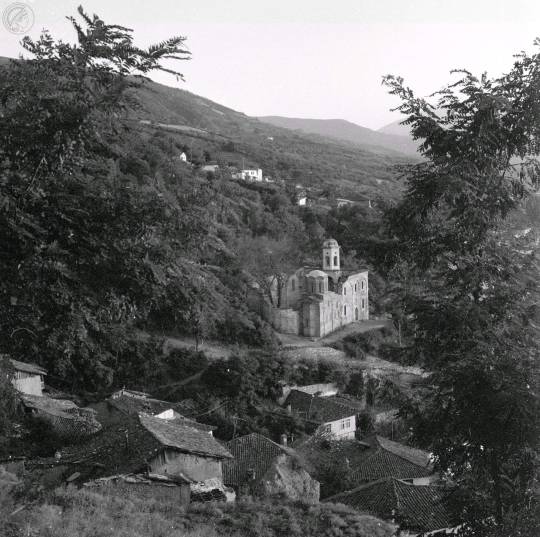

Podkaljaja, Serbian quarter of Prizren, 1969. Otto Lehmann-Brockhaus
#crkva svetog spasa#podkaljaja#kaljaja#подкаљаја#призрен#metohija#vintage#serbia#serbian#serbian culture#serbian history#orthodoxy#nemanjić#today serbian returnees live there#sadly much lower number#but it's a progress hoping more people can return to their homes peacefully
69 notes
·
View notes
Text

▪️Monastery Tresije, Kosmaj, Central Serbia 🇷🇸
◾The monastery was founded in 1309 during the reign of King Dragutin Nemanjić. It is located on Kosmaj, near today's road Sopot - Mladenovac, it is 6-7 km away from Sopot, and about 15 km from Mladenovac. It is dedicated to the holy archangels Michael and Gabriel. It was named Tresije after the stream that springs next to the monastery.
◾Source
#serbian#Orthodox#Tresije Monastery#Nemanjić Dynasty#Medieval Serbia#Middle Ages#Balkans#balkan#europe#Serbian Orthodox#Serbia
54 notes
·
View notes
Text




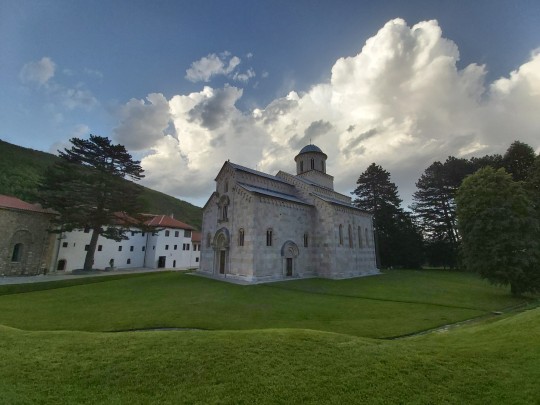
Visoki Dečani monastery complex, Kosovo province, south Serbia. Construction began during the rule of Serbian king Stefan Uroš III Nemanjić in 1327 and ended in 1335. UNESCO cited it as "an irreplaceable treasure, a place where traditions of Romanesque architecture meet artistic patterns of the Byzantine world".
136 notes
·
View notes
Note
jasmine; what mythical creature do you wish actually existed? apricot drift; how do you feel right now? honey perfume; favorite movie ever? tulip; name 5 facts about yourself. lilac; if you could go back in time which time period would you visit? sunflower; share a favorite quote. moonflower; what’s your favorite color?
🥰
jasmine: already answered :)
apricot drift: how do you feel right now?
i feel good, pretty calm for once, which is nice. how are you?💓
honey perfume: favorite movie ever?
my two absolute favorites are definitely titanic and the prince of egypt. both are so powerful and epic and both make me feel so much.
i'd also like to mention good will hunting....it's a beautiful, philosophical movie that i really, really enjoyed. it stayed in my memory, which is always a good thing.
also, whisper of the heart. the sweetest thing.
tulip: name 5 facts about yourself.
1. as a kid, i was very good at maths. when i was 6, i used to solve mathematical tasks on the 3rd grade level of elementary school without a problem. and i always enjoyed the thrill of having a complicated mathematical task and all the steps you had to take in order to get a correct result. it was just neat to me. unfortunately, as i grew older, this just didn't stick with me that much. i am definitely much more into arts and language now, but i still very much appreciate mathematics.
2. my favorite board game is called dixit. it's such an interesting game with beautifully illustrated cards. the point is to confuse other players by telling a short story based around one of the cards you have in your hand. others are supposed to choose one of their own cards that mostly resembles your story. and once everyone makes their choice, all the players are supposed to judge whose card is the most relevant to your story. you also have to try convince other players why is your card the best one. it's so fun and engaging, i highly recommend it.
3. i used to write short stories for my classmates in middle school. it started with me writing a story for my best friend and then my other friends saw it and asked me to write one to them as well. everyone was always a protagonist in their own story and i used to intertwine their crushes and personal interests and hobbies into each story. at one point it started being exhausting because everyone asked for their story lmao, but i still remember very much enjoying coming up with those stories and listening to their reactions afterwards was always worth it.
4. this one is a bit funny....but whenever i visit my relatives or my friends i always have to check out their little libraries lmao. i just really enjoy seeing what kind of books people own and what is their reading taste like....it's just a thing i do, i guess.
i wish to learn ice-skating. i still haven't learned.....i really enjoy looking at talented people competing at ice-dancing and that sort of thing. especially tessa and scott. they're mesmerizing.
lilac: if you could go back in time which time period would you visit?
keeping this one within my own country and culture (otherwise this would take forever lmfao) i would absolutely love to go back to serbia during its nemanjić dynasty. specifically around 1217 when the serbian kingdom was proclaimed, which led to the establishment of the serbian orthodox church in 1219. imagine witnessing that. not to mention meeting such incredible and important people from our history, saint sava as a biggest example.🤍
sunflower: share a favorite quote.
oh, i definitely have a few. i shared some of them before on my blog, but here they are again;
What is a book? Taken upon the eye, it's a small thing, made from the most expandable material, paper. Taken essentially, it's one of the strongest passions and delights, it's a quiet water that dives the shore, it's dynamite which breaks and rises into the air and then builds differently, it's a sublime, wise teacher or satanic seducer.
-Isidora Sekulić
"It is a mistake to talk about the artist "looking for" his subject. In fact, the subject grows within him like a fruit and begins to demand expression. It is like childbirth. The poet has nothing to be proud of: he is not master of the situation, but a servant. Creative work is his only possible form of existence, and his every work is like a deed he has no power to annul. For him to be aware that the sequence of such deeds is due and ripe, that it lies in the very nature of things, he has to have faith in the idea, for only faith interlocks the system of images."
-Andrei Tarkovsky
"To define is to limit" - Oscar Wilde
"Magic does that. It wastes you away. Once it grips you by the ear, the real world gets quieter and quieter, until you can hardly hear it at all." - Catherynne M. Valente
moonflower: what's your favorite color?
i honestly thought about this haha and i realized i like the combination of colors much more than just one color only.
for example i like how red and black look together. or how sunset gold looks in ocean blue. that sort of thing.
but i think i will always love pink and all its shades. it's my forever favorite.
thank you for asking all these questions! ljubim!💜
4 notes
·
View notes
Text

Charles of Valois, brother of King Phillip IV of France, gained right to the throne of Latin Empire of Constantinople in 1301, through his marriage to Latin Empress Catherine of Courtenay, granddaughter of Emperor Baldwin II. In cooperation with Phillip of Taranto, Charles began the creation of grand alliance against Byzantine Empire. From 1306, Serbian king Stefan Uroš II Milutin was also included in this alliance.
By the early 1308, two diplomats of Serbian king, Marko Lukarić and Trifun Mihajlović, went to France. Serbian embassy first met with pope Clement V, probably in Poitiers, where he usually resided before moving to Avignon. Diplomats then went to Charles of Valois, and on 27th March of 1308 in Abbey Lys near Melun, signed a treaty of alliance (apud abbatiam de Lilio, prope Meledunum). Both sides vowed friendship and mutual support in war against Byzantine Empire, as with other enemies, except in possible conflict between King Milutin and Phillip of Taranto.
Serbian diplomats then arranged the marriage between Carica, daughter of King Milutin, and Charles of Valois’ younger son Charles, future Count Charles II of Alençon. Contract stipulated that Carica will convert to Catholic faith before marriage. Carica was born from Milutin’s marriage to Elisabeth Árpád, sister of Hungarian king Ladislaus IV and Serbian queen Katalin, wife of Milutin’s older brother Dragutin. Several prominent figures witnessed the signing of this agreement, including Louis Count of Évreux, brother of King Phillip IV and Charles of Valois.
Charles then dispatched his own envoys to Serbia, to confirm the treaty with Serbian king. Mission was led by Jehan de Montluçon, prebendary of Gastines, followed by Pierre le Riche subdeacon of Chartres, Venetian Pietro Querini and others. They were also accompanied by diplomat Marko Lukarić from Ragusa. Treaty was ratified on 25th of July 1308, in King’s tents near ”Goliqueline”, place still unknown to historians. Phillip IV king of France again confirmed this agreement in 1313.
However, the marriage between Carica and Charles II of Alençon never took place. Political circumstances and differences have distanced the two sides. Count Charles married twice during his life, the first time in 1314 to Jeanne of Joigny. After the death of his first wife, he married Maria, the daughter of Fernando de la Cerda, with whom he would remain married until his death in the battle of Crecy in 1346.
Almost nothing is known about Carica’s later life. Her portrait is painted as part of the Nemanjić lineage in Dečani monastery, under the inscription ЦРИЦА ДЩИ КРАЛА ОУРОША - Carica daughter of King Uroš. Another portrait of Carica has been preserved in Gračanica monastery, also part of the Nemanjić lineage, but inscription on the fresco is damaged and difficult to read. Due to the lack of data, it is assumed that Carica did not marry for the rest of her life.
4 notes
·
View notes
Photo
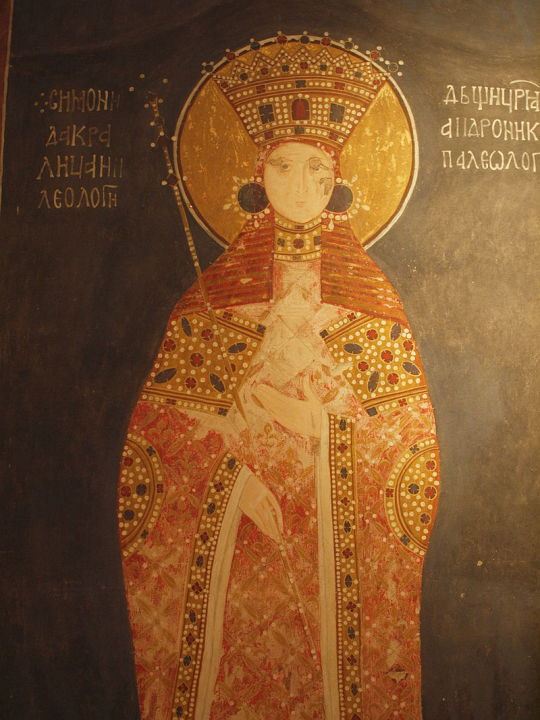
Simonida Nemanjić (c. 1294 – after 1336), born Simonis Palaiologina, was a Byzantine princess and queen consort of the Kingdom of Serbia as the fourth wife of Serbian king Stefan Milutin (r. 1282–1321). She was a daughter of the Byzantine Emperor Andronikos II Palaiologos (r. 1282–1328) and Irene of Montferrat. In Medieval Serbia Simonida is best remembered as a patron of the Arts, Music and Literature.
#Simonida Nemanjić#Simonis Palaiologina#House Palaiologos#XIII century#XIV century#mosaic#people#portrait#art#arte#Byzantine Empire
8 notes
·
View notes